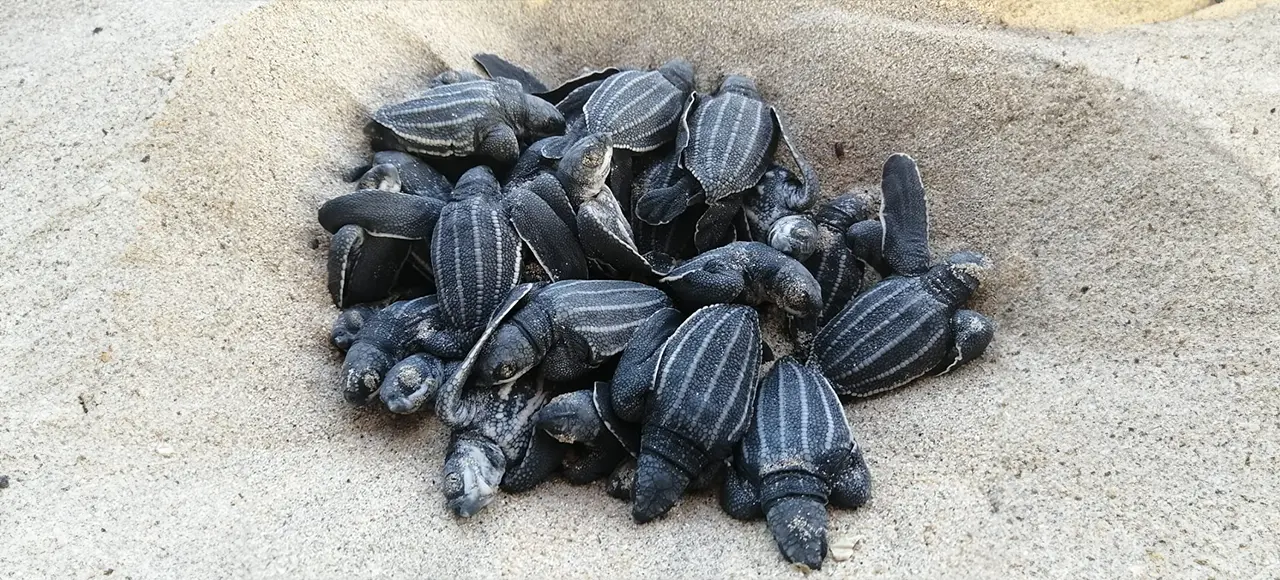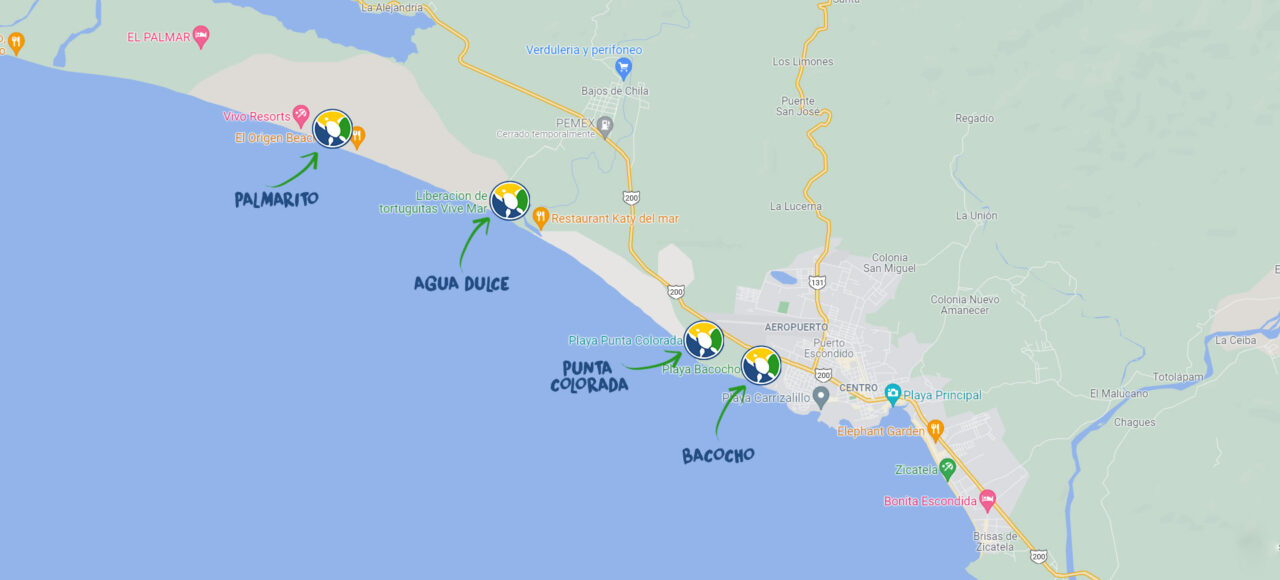
VIVEMAR is a non-governmental organization which does not belong to any government or private institution, so the necessary resources to sustain all the projects that we develop come from regenerative tourism that supports us through the observation of the release of sea turtles into the ocean, through through our volunteer program, nest adoptions and donations.
The volunteers that we managed to develop with your support through the release of sea turtles are the following:
-Conservation and protection of 4 species of sea turtles out of 7 that exist in the world.
-Scientific ringing of birds
-Reforestation of mangroves
-Organic gardens
-VIVEMAR School Project – Environmental education in community schools
-Altitude Project, placement of PIT and plaque on the Leatherback turtle, the largest turtle in the world
-Cleaning beaches
-Innovation
An important fact that you should know is that VIVEMAR protects 27 km of coastline, this being the project with the largest protected coastline and, in turn, one of the most outstanding conservation and protection projects in Mexico.
Due to its large expanse of protected coastline, VIVEMAR has 4 incubation pens in which 3 of us observe the release of hatchlings with tourism. AN IMPORTANT FACT YOU SHOULD KNOW IS THAT VIVEMAR PROTECTS TURTLES DAILY AS WELL AS WE RELEASE DAILY THANKS TO THE PRESENCE OF THE TURTLE MARINA GOLFINA WHICH IS PRESENT ALL YEAR ROUND.
We release at different points on the beach, being more than 85% released at night, leaving the hatchlings to clean the nests for release with tourism, in order to raise funds.
As of March 2023, VIVEMAR began working with a new release methodology in which tourists can no longer release the hatchlings by themselves, only during low nesting seasons, in order to provide better management of hatchlings. We detected bad practices on the part of tourists such as :
-Prolonged photo session
-Touching or harassing the turtles
-They fell out of the containers
-Excessive delay in releasing the turtles, etc.
This new implemented methodology helps us maintain order with the tourists who visit and support the project with the sole purpose of providing the best management and protection for baby turtles.
Remember that when doing the experience with us you are supporting a conservation project that works on multiple tasks to maintain the ecological balance on the coast, your support helps to contribute in many ways, (Transparency Link)
WHAT SHOULD I DO IF I WANT TO GO TO OBSERVE THE RELEASE OF THE BABIES INTO THE OCEAN?
1- READ ALL THE PREVIOUSLY MENTIONED INFORMATION
2- Select the incubation pen where you want to go to observe the release
3- Before visiting us, please call the leader of each camp to confirm that there will be a release.
👉🏼Bacocho https://maps.app.goo.gl/uE5Ln98RN4amvprX6?g_st=ic
📲 +52 954 544 1330
✅ To release in Bacocho, no reservation is needed, just arrive directly at the beach at 4:45 pm.
👉🏼 Agua dulce https://maps.app.goo.gl/z1L84mrQf5XW93qg9?g_st=ic
📲 +52 954 126 9558
✅ To release in Agua Dulce, please call to make a reservation.
👉🏼 Punta Colorada https://maps.app.goo.gl/z1L84mrQf5XW93qg9?g_st=ic
📲 +52 954 126 9558
✅ To release in Punta Colorada please call to make a reservation.
4- The contribution is $150 Mexican pesos per person and payment must be made in cash directly at the incubation pen
5- The number placed on this WEB page is specifically for volunteering, nest adoptions and donations, so we ask you to call the numbers described in step 3 to check release availability.
